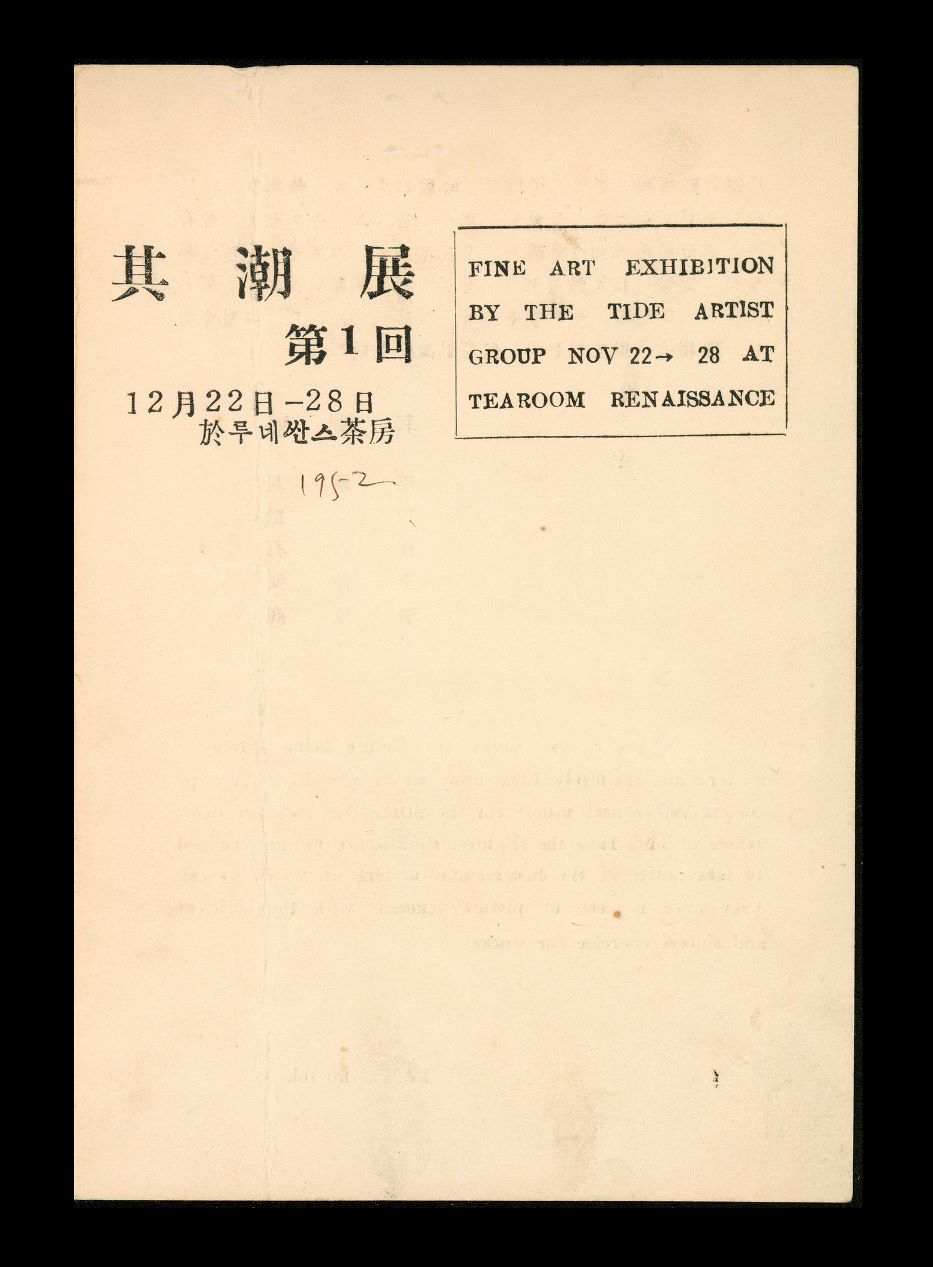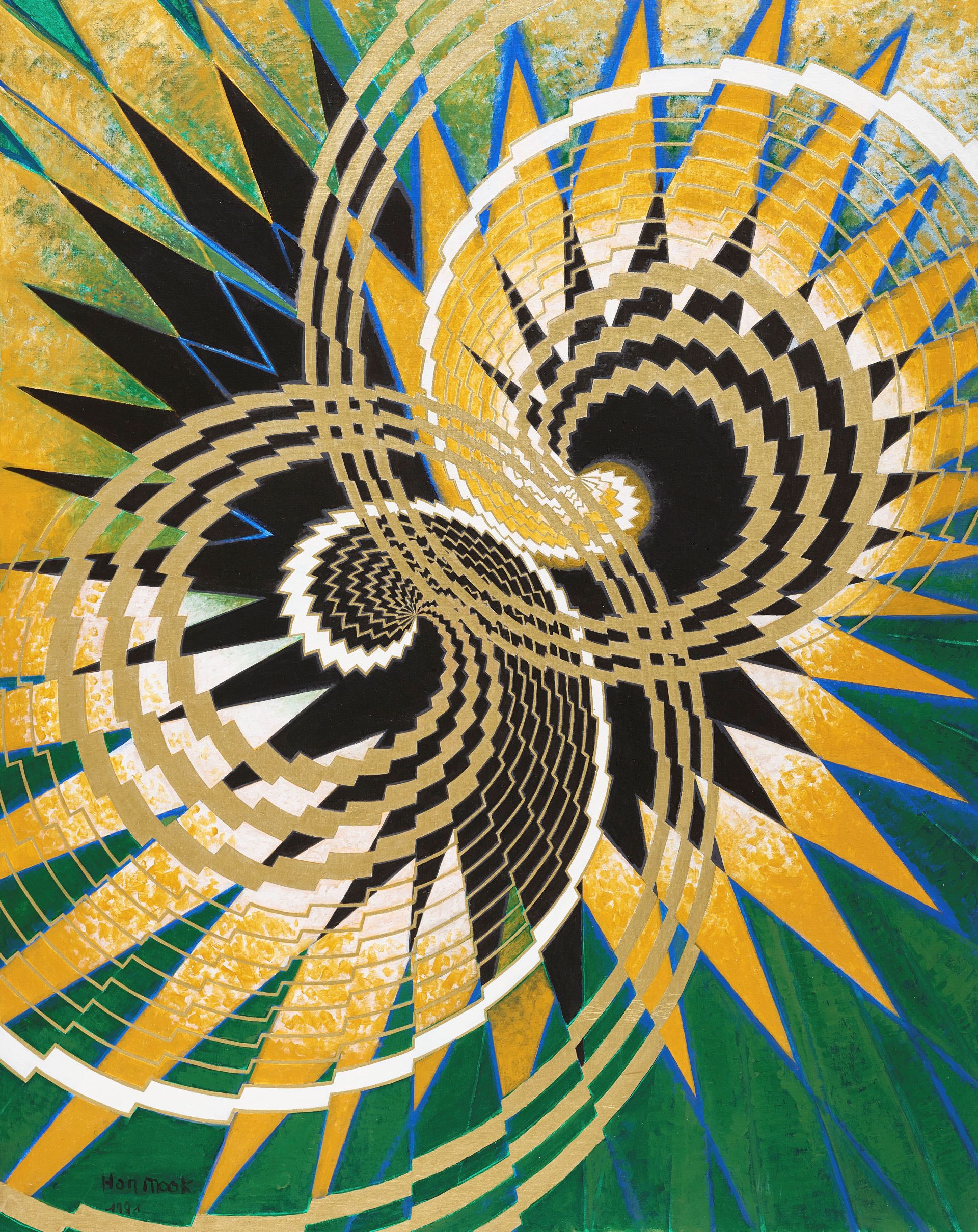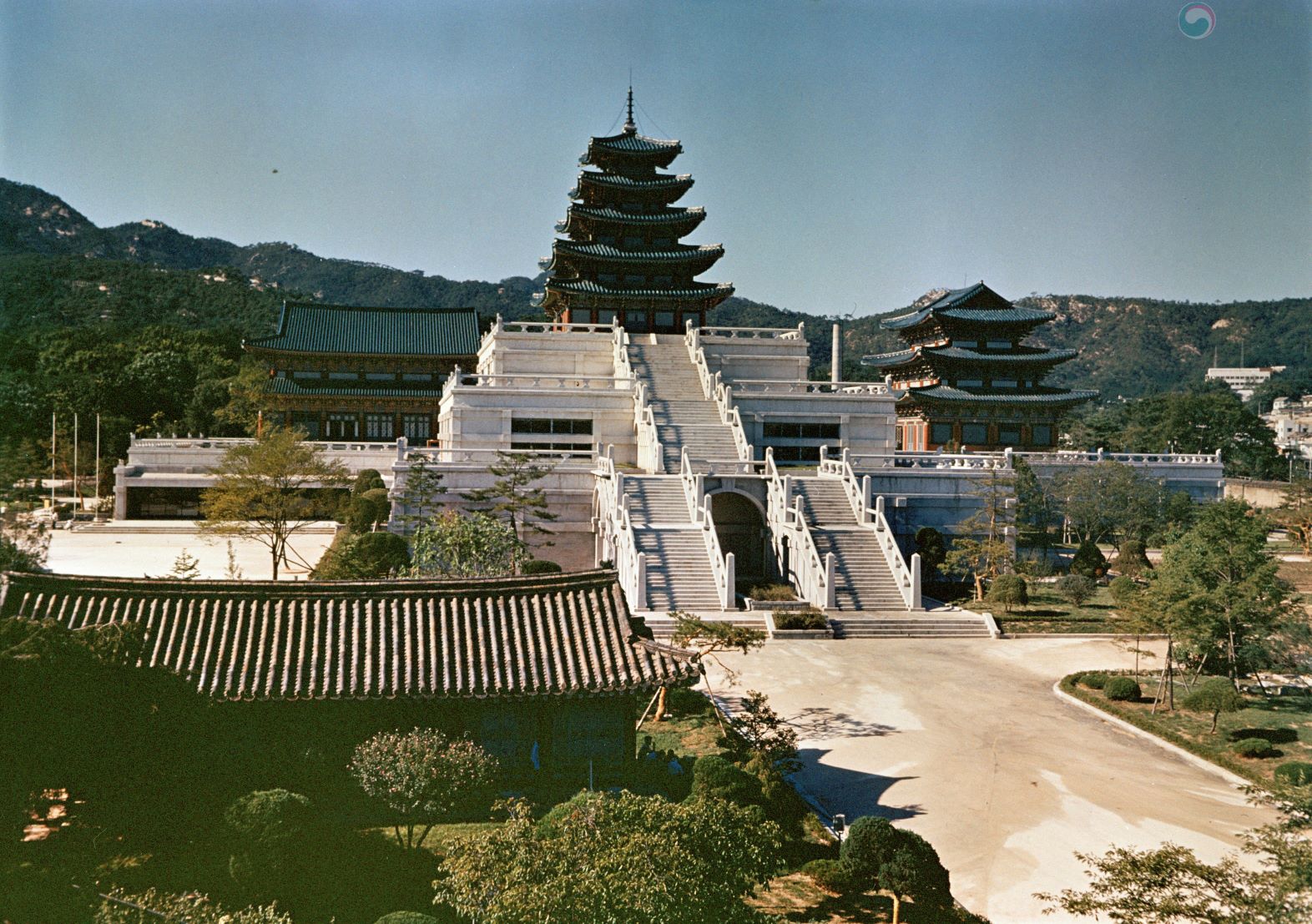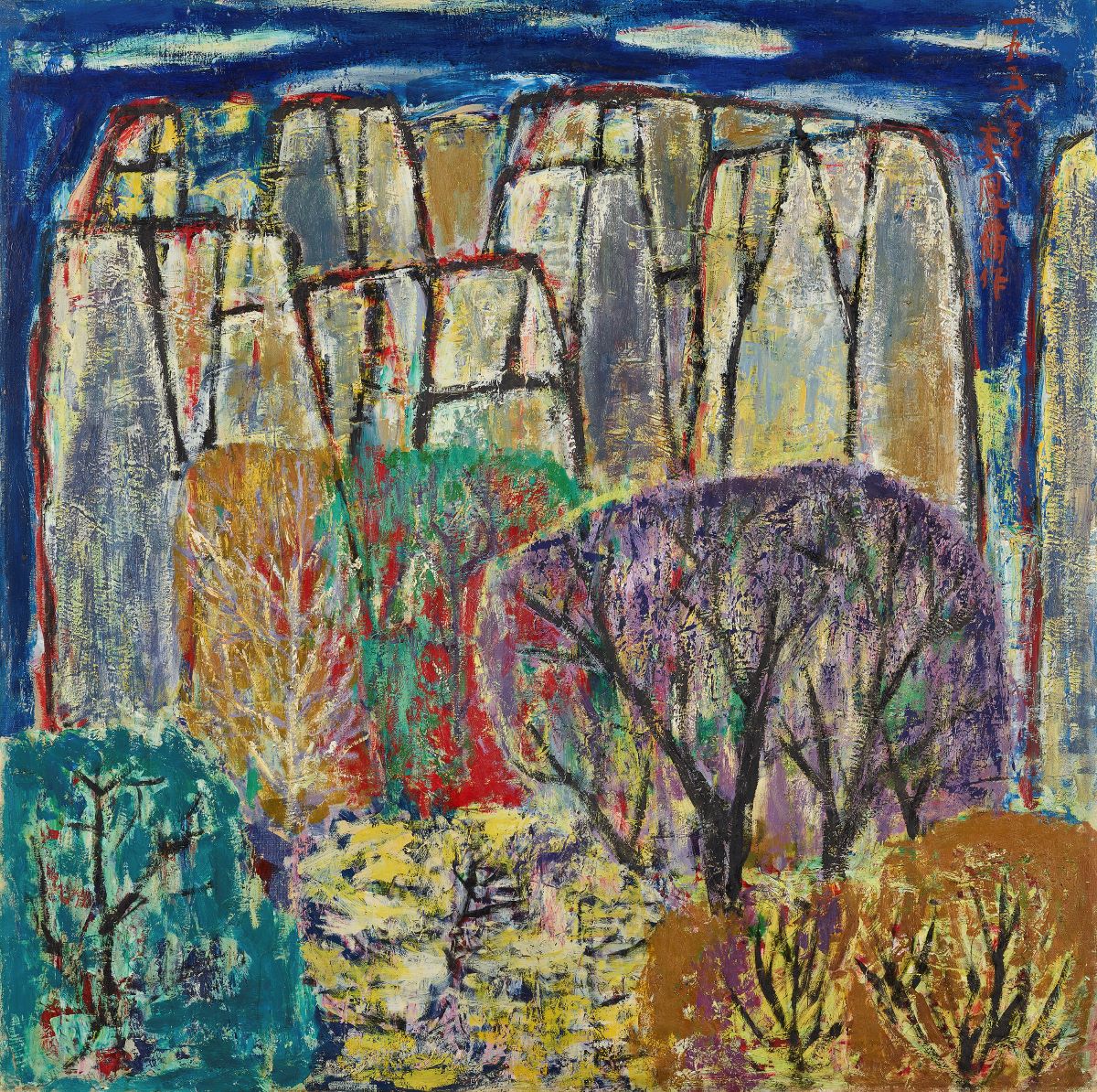
The First Gijo Associates Exhibition, Brochure, 1952. MMCA Art Research Center Collection
Gijohoe
* Source: Multilingual Glossary of Korean Art. Korea Arts Management Service
Related
-

Han Mook
Han Mook (1914-2016, pen name Mook, real name Han Baekyu, Japanese name Momoda), was born in Seoul and moved to Manchuria in 1932. He studied painting at the Ogwahoe Art Research Institute in Dalian and started to create his own works. In 1935, he moved to Japan, and studied at Kawabata Art School. After he returned to Korea in 1944, he taught at Geumgang Middle and High Schools in Goseong. When the Korean War broke out, he fled to Busan in 1951 and returned to Seoul in 1953, where he taught at Osan Middle and High Schools. He taught as an art professor at Hongik University in 1955 and led the foundation of the Modern Art Association in 1957. To concentrate on his creative practice, he departed to Paris in 1961 and studied etching at Atelier 17 in 1971. He died in Paris in 2016. Mook explored the gradation from figuration to non-figuration, and during the 1960s, he created works based on pure vertical and horizontal compositions while also using collage techniques and strong matiere. In the 1970s, he created many etched and abstract geometric works in acrylic, that represented the interlocking time and space of the universe in concentric circles and radiation. Since the mid-1980s, narrative and formative elements began to dominate within his work as he investigated the theme of introspection. He also created calligraphy, drawing, and collage works on traditional Korean Hanji paper and cloth.
-

Lee Jungseop
Lee Jungseop (1916-1956, pen name Daehyang) was born in Pyongyang. He learned oil painting from Yim, Gilbert Pha at Osan School, Jeongju. He attended the Teikoku Art School in Japan in 1936 and moved to the Bunka Gakuen to learn oil painting in 1937. During his school years, he submitted his work to Japan Free Artists Association [Jiyū bijutsuka kyōkai] in 1938 and to the New Artists’ Association [Sin misulga hyeophoe] Exhibition. After his return to Korea in 1943, he was active in Wonsan and moved to South Korea with his family after the outbreak of the Korean War. He sought shelter in Busan and Seogwipo but had to send his Japanese wife and two sons back to Japan in June 1952 due to financial difficulties. He submitted work as a war correspondent painter. He orchestrated solo exhibitions in Tongyeong in 1953 and Midopa art gallery in Seoul and for the United States Information Service Center at Daegu in 1955. He died at a Red Cross hospital in 1956 after suffering from malnutrition and liver cirrhosis. His works, such as White Ox, illustrated local subject matter and family life with a simple touch, and one of his drawings on silver foil was purchased by the Museum of Modern Art in New York. A high-profile posthumous exhibition in 1972 at Hyundai Hwarang greatly increased the popularity of his work among the general public.
Find More
-

National Museum
The National Museum was established by the Korean government in 1945 after Independence. It consists of a general museum and a special museum. The National Museum of Korea as a general museum took over the Museum of the Japanese Government-General of Korea and opened at Gyeongbokgung Palace in 1945. It annexed the Gyeongju, Buyeo, Gongju, and Kaesong museums. It also annexed Song Seokha’s National Museum of Anthropology and accepted the collection of Deoksugung Museum of Art (former Yi Royal Family Museum) in 1969. The museum was called “National Museum” from 1945 to 1972, and the “National Museum, of Korea” after the reorganization in 1972. Meanwhile, local annex museums were upgraded to local national museums, such as Gyeongju National Museum and Buyeo National Museum. Since Independence, national museums have been constructed in many local cities, including Gyeongju, Buyeo, Gongju, Gwangju, Jinju, Cheongju, Jeonju, Daegu, Gimhae, Jeju, Chuncheon, Naju, and Iksan. These museums play pivotal roles in maintaining local histories and cultures. Special museums within the National Museum of Korea include the National Palace Museum (the history and culture of the Joseon Dynasty), the Maritime Museum (maritime culture), the Forest Museum, the Diplomatic Museum, the Police Museum, the Custom Museum, the Lighthouse Museum, the Postal Museum, and the Museum of Korean Traditional Music.
-

Lee Bongsang
Lee Bongsang (1916-1970, pen name Seokjeong) graduated from the Training Department at Gyeongseong Normal School in 1937. Self-taught in painting, Lee received his first honorable mention at the eighth Joseon Art Exhibition [Joseon misul jeollamhoe] in 1929 at the age of thirteen. He went on to receive honorable mentions and win special prizes, coming to prominence as a painter. He later moved to Japan and during his stay there his work was selected for the Ministry of Education Art Exhibition [Monbusho bijutsu tenrankai]. In 1942, together with Japanese artists active in Seoul, he founded the artist group named Changnyongsa. After Korea’s liberation from Japan, Lee participated in the founding of several artists’ groups, such as the 1950 Art Association, Gijojeon, Sinsanghoe, and Gusanghoe. He was also at the forefront of fostering later generations through the compilation of textbooks and criticism. His early works reflected impressionist realism. In the 1950s, however, he turned to a painting style characterized by bold compositions, bright colors, and a rough brushwork, which he developed through his association with Kim Whanki, Yoo Youngkuk, Kim Byungki, and Park Kosuk. From 1953 he worked as a professor at Hongik University, and from the year 1954 he was invited to participate in the National Art Exhibition (Gukjeon) as a recommended artist, invited artist, and judge.






